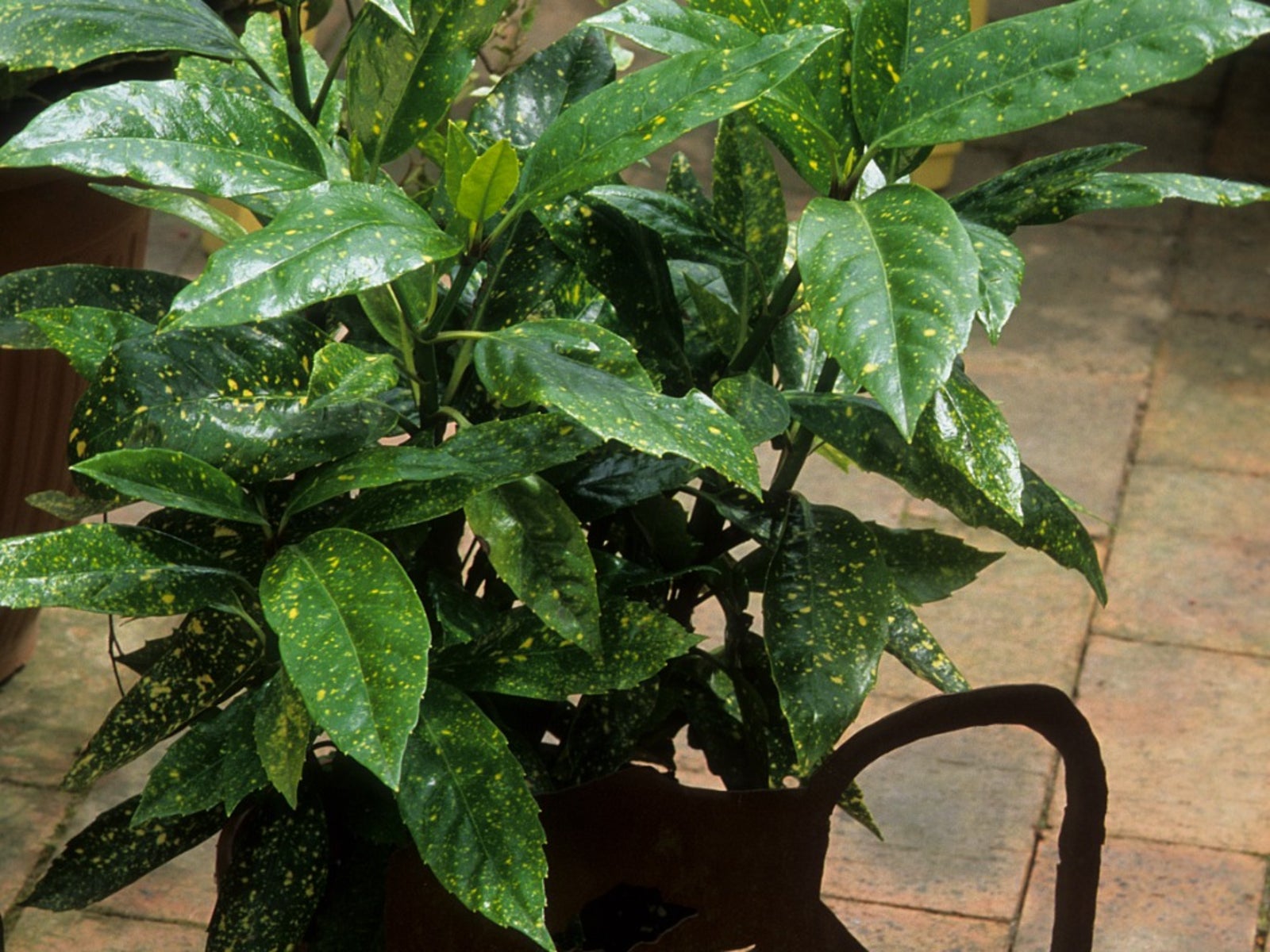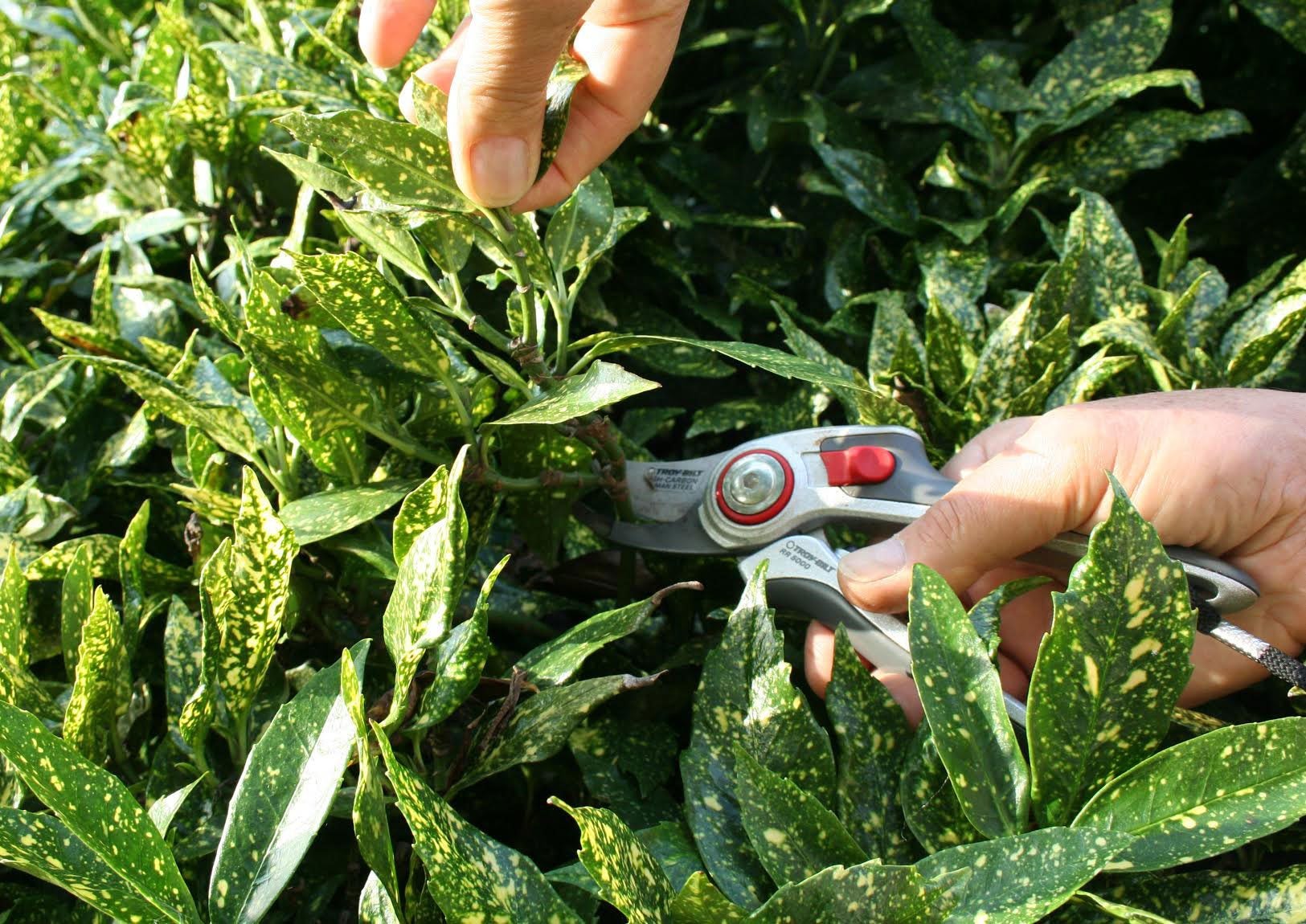Container Grown Aucuba Shrubs: Can You Grow Japanese Laurel In A Pot


Can you grow Japanese laurel in a pot? Japanese laurel (Aucuba japonica) is a striking evergreen shrub appreciated for its showy, lustrous foliage. This adaptable plant is about as low-maintenance as they come, and growing Japanese aucuba in containers is no problem. Read on to learn more about container grown aucuba shrubs.
Potted Japanese Laurel Plants
If you’re interested in growing Japanese aucuba in containers, then you’ll have to become familiar with the plant and its needs. Japanese laurel is a relatively slow-growing plant that eventually reaches heights of 6 to 10 feet (2-3 m.), although it can grow as tall as 15 feet (4.5 m.) when conditions are just right. If you’re concerned about the size, consider a dwarf plant, which generally tops out at about 3 feet (1 m.). Plant Japanese laurel in a sturdy container with at least one drainage hole, as the plant will rot without adequate drainage. A piece of mesh laid over the hole will prevent it from becoming clogged with potting soil. Plant the shrub in a soil-based potting mix, which is heavy enough to anchor the roots and helps stabilize the container during windstorms. However, avoid regular garden soil which becomes compacted and doesn’t provide proper drainage in a container.
Japanese Aucuba Container Care
The foliage of container grown aucuba shrubs remains shiny and dark green year round – as long as the plant is located in shade or filtered sunlight. Too much light, especially intense afternoon sunlight, can fade the color or even scorch the leaves. If you choose to grow potted Japanese laurel plants indoors, be sure to place the plant in a cool, dimly lit environment. Water as needed to keep the soil slightly moist but never soggy, as Japanese laurel is prone to root rot. Cut back on water during the winter months and allow the soil to dry between watering. Feed container grown aucuba shrubs once every month from spring through summer using a general-purpose, water-soluble fertilizer. Withhold fertilizer during the fall and winter months. Potted Japanese laurel plants generally need no pruning; however, you can provide a light pruning to tidy up the plant and remove damaged or unsightly growth before new growth appears in late winter or early spring. Repot container grown aucuba shrubs as needed to allow for plant growth – usually every other year. Repot to a container no more than one size larger.
Gardening tips, videos, info and more delivered right to your inbox!
Sign up for the Gardening Know How newsletter today and receive a free copy of our e-book "How to Grow Delicious Tomatoes".

A Credentialed Garden Writer, Mary H. Dyer was with Gardening Know How in the very beginning, publishing articles as early as 2007.
-
 Looking For Plants To Give You The Soft And Fuzzies? Try These 5 Fuzzy Leaf Plant Options
Looking For Plants To Give You The Soft And Fuzzies? Try These 5 Fuzzy Leaf Plant OptionsLovers of texture, drama, silver foliage and tactile plants will adore these special sensory garden additions. These fuzzy leaf plant options will leave you all aglow
By Susan Albert
-
 Get Ready For A Summer Of Hummers! Grow These Full Sun Hummingbird Plants and Flowers
Get Ready For A Summer Of Hummers! Grow These Full Sun Hummingbird Plants and FlowersIf you’re lucky enough to enjoy a sunny backyard, make sure you are maxing out on your pollinator opportunities and grow these full sun hummingbird plants and flowers
By Tonya Barnett
-
 Japanese Aucuba Propagation - How To Root Aucuba Cuttings
Japanese Aucuba Propagation - How To Root Aucuba CuttingsAucuba is a lovely shrub that seems to almost glitter in the shade. Propagating aucuba cuttings is a snap. Find out how to root aucuba cuttings in this article. Click this article to get more Japanese aucuba propagation information.
By Jackie Carroll
-
 Aucuba Plant Care: Learn About Aucuba Growing Conditions
Aucuba Plant Care: Learn About Aucuba Growing ConditionsPerfect for shady areas that need a touch of color, the Japanese aucuba plant brightens dark spots in the landscape with large leaves that are flecked with yellow-gold. Read this article to find out how to grow and care for aucuba plants.
By Jackie Carroll
-
 Aucuba Pruning - How And When To Prune Aucuba Shrubs
Aucuba Pruning - How And When To Prune Aucuba ShrubsOne of the most attractive home landscape plants is the Aucuba japonica. This slow-growing foliage plant assumes a shrub-like habit with glossy, pointed leaves and graceful, arching stems. Find pruning info here.
By Bonnie L. Grant